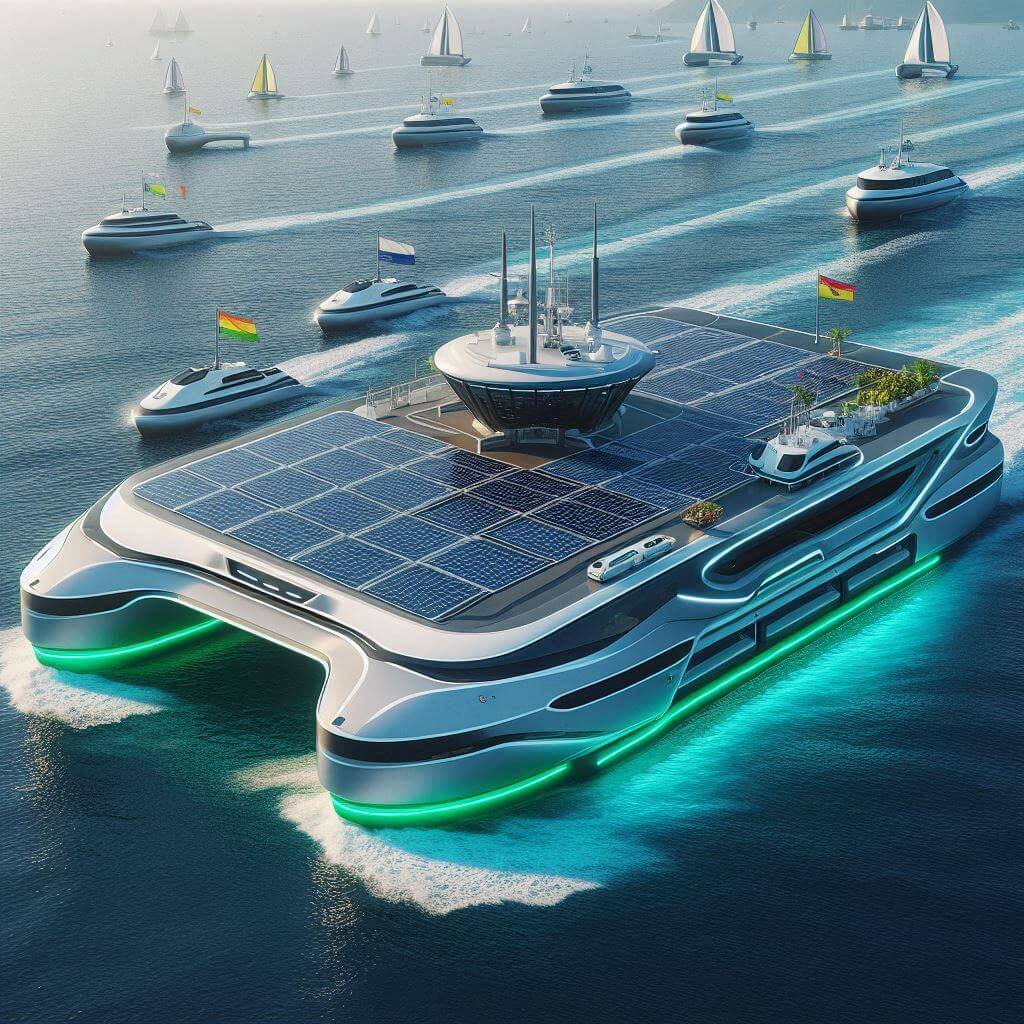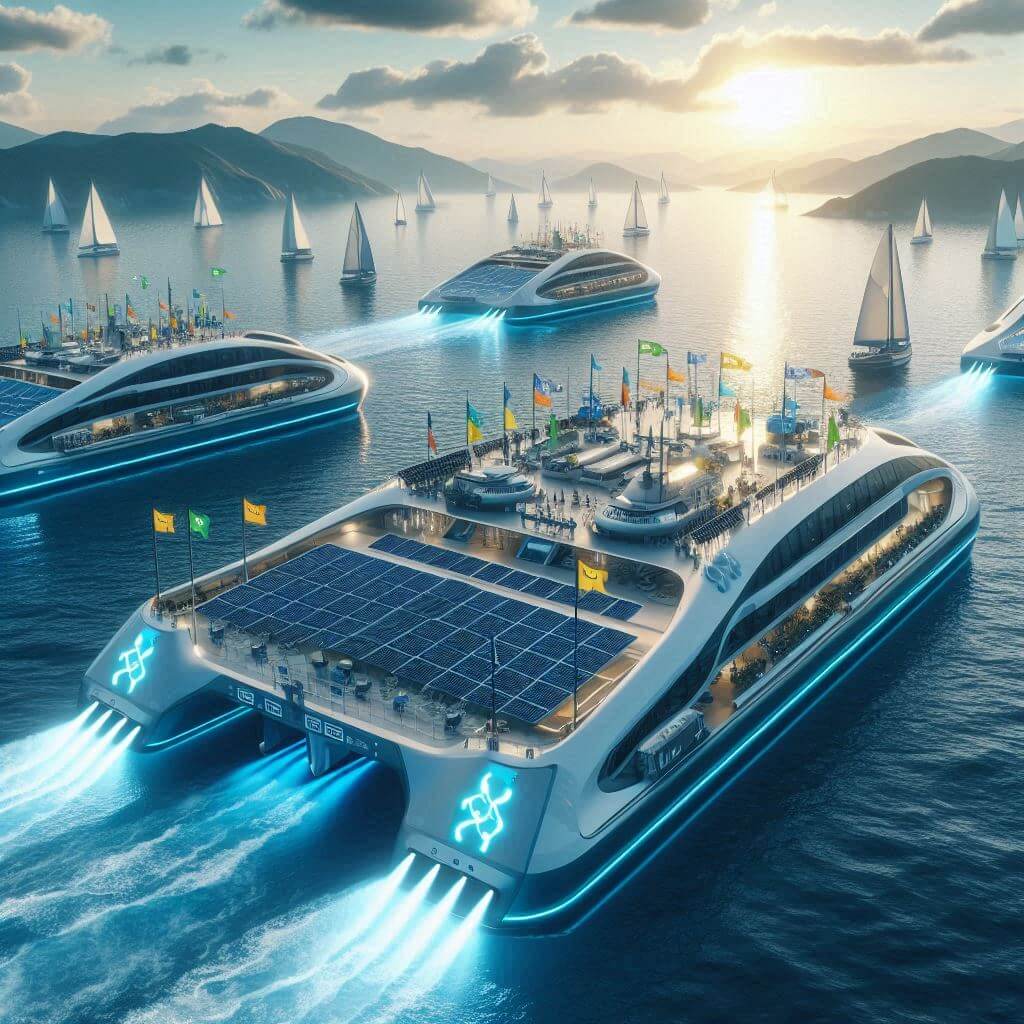Hydrogen-powered ferries are powered by hydrogen fuel cells that function by a chemical reaction between hydrogen and oxygen to produce electricity. This reaction produces only water and heat as byproducts, making it an exceptionally clean source of energy compared to traditional fossil fuels. Unlike conventional diesel engines that emit carbon dioxide, nitrogen oxides, and particulates, hydrogen fuel cells offer a zero-emissions alternative.
The main components of a hydrogen-powered ferry include hydrogen storage tanks, a fuel cell system, electric propulsion motors, and battery systems. First, hydrogen gas is stored in high-pressure tanks carefully designed to operate in marine environments. These tanks must meet strict safety standards to prevent leaks and withstand potential shock or fire.
Hydrogen is sent from storage tanks to fuel cells. Inside the fuel cells, a catalyst, usually platinum, facilitates the reaction between hydrogen and oxygen (from the surrounding air). This electrochemical reaction generates electricity, which is sent to the electric motors that propel the ferry. Unlike internal combustion engines, the process in fuel cells is quiet and vibration-free, which contributes to a more comfortable passenger.
 Excess electricity produced by fuel cells is stored in on-board batteries. This energy storage provides a stable power supply and can be used during periods of high demand or when the ferry needs extra power, such as during dock maneuvers or in strong currents.
Excess electricity produced by fuel cells is stored in on-board batteries. This energy storage provides a stable power supply and can be used during periods of high demand or when the ferry needs extra power, such as during dock maneuvers or in strong currents.
Although hydrogen ferries tout high efficiency and zero emissions, adoption of the technology faces challenges, including current hydrogen production methods. Currently, most hydrogen is produced through the steam conversion of methane, a process that uses natural gas and releases carbon dioxide. An alternative production method, electrolysis, splits water into hydrogen and oxygen using electricity. When electrolysis is powered by renewable sources such as wind or solar energy, it is a much cleaner and more sustainable solution, further enhancing the environmental benefits of hydrogen fuel cells.
The infrastructure needed to produce, distribute, and refuel hydrogen is still under development. The development of large-scale, reliable hydrogen fueling stations is critical to the practical deployment of hydrogen ferries. Each station must adhere to strict safety regulations to ensure the safe and efficient operation of the gas station.
In terms of operational benefits, hydrogen fuel cells are known for their longevity and lower maintenance requirements because they have few moving parts compared to traditional engines. This can lead to cost savings over the life of the ferry. However, the initial investment in hydrogen fuel cell systems is currently higher than that of conventional engines, requiring technology improvements and economies of scale to reduce costs.
Safety precautions are paramount when working with hydrogen due to its flammable nature. Advanced sensors, reliable storage tanks, and strict operating protocols must be put in place to ensure the safety of both the vessel and its passengers. Regulatory bodies are actively working to establish standards and guidelines to promote the safe use of hydrogen technology in marine transportation.
Advantages Of Hydrogen Ferries
The introduction of hydrogen engines offers several concrete advantages, in particular in terms of environmental impact, operational efficiency, and energy security.
One of the most noticeable benefits is a significant reduction in greenhouse gas emissions. Traditional diesel ferries emit large amounts of carbon dioxide (CO2), nitrogen oxides (NOx), sulfur oxides (SOx), and particulate matter, which contribute to air pollution and global warming. Hydrogen fuel cells, however, only produce water vapor as a byproduct, making them an emission-free technology. By replacing diesel engines with hydrogen fuel cells, ferries can significantly reduce their contribution to air pollution and climate change. This change is good not only for the atmosphere but also for the health of coastal communities that suffer from poor air quality due to shipping.
Water-powered ferries also benefit from high operational efficiency. Fuel cells convert hydrogen directly into electricity through an electrochemical process, bypassing the inefficiencies associated with internal combustion engines. This results in higher energy efficiency and better fuel economy. In addition, hydrogen fuel cells have fewer moving parts than internal combustion engines, which means lower maintenance requirements and costs. Reduced maintenance requirements can lead to increased reliability and longer periods of operation without unplanned downtime.
Another operational benefit is the reduction of noise pollution. Diesel engines are notorious for their noisy operation, which can be particularly intrusive in urban harbors and harmful to marine wildlife. Hydrogen fuel works quietly, significantly reducing the noise level. This makes hydrogen ferries particularly suitable for routes that pass through residential or environmentally sensitive areas.
Hydrogen can be produced from a variety of feedstocks, including natural gas, water, and biomass. This versatility means that countries and regions can develop hydrogen production capabilities, reducing dependence on fossil fuel imports and increasing energy security. For example, hydrogen can be generated using renewable energy sources such as wind or solar power through a process called electrolysis. When hydrogen is produced in this way, it not only provides a constant and sustainable supply of fuel but also contributes to the operation of renewable electricity networks by absorbing excess electricity during periods of low demand.
The introduction of hydrogen-powered ferries can also stimulate economic growth through the creation of jobs and new business opportunities in the hydrogen sector. Building and supporting hydrogen production plants, fueling stations, and production of hydrogen fuel cells can create jobs, and investment in advanced technologies. In addition, this transition promotes innovation and can position countries as leaders in the new global hydrogen economy.
Hydrogen as a fuel also provides improved safety to meet stringent regulatory standards. Modern technologies allow safe storage and handling of hydrogen in high-pressure tanks that fully withstand accidents and harsh marine conditions. Improved safety protocols and advanced sensors ensure that a hydrogen leak, should it occur, is detected and dealt with quickly, minimizing risks to passengers and crew.
By introducing water-powered ferries, the maritime industry can significantly reduce its dependence on fossil fuels. This shift is critical to long-term sustainability, as fossil fuel supplies are limited and their extraction and consumption have serious environmental impacts. Hydrogen, especially green hydrogen produced from renewable energy sources, offers a sustainable alternative that can meet the energy needs of maritime transport without depleting natural resources or causing major damage.

